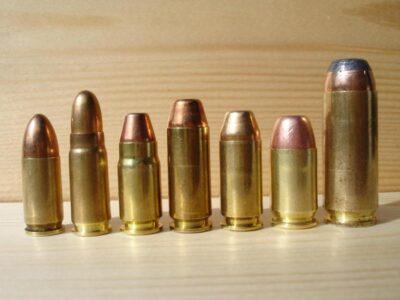Born in the early 1960s as the brainchild of Bill Jordan, Elmer Keith and Skeeter Skelton, there is a uniquely viable magnum cartridge that has stayed under the radar.
I’m talking about the venerable .41 Remington Magnum, which was designed with the idea of making a police service cartridge that was neatly balanced between .357 and .44 magnum, and also could be loaded hotter for hunting use.
What should have been the ultimate police revolver soon became a somewhat obscure hunting revolver, though, due to a poorly chosen introduction of heavy hunting guns paired with hot hunting ammo, while mostly ignoring the police and armed private citizen market. The end-result has been a cartridge that over the last 50 some-odd years has developed a cult-like following of skilled handgunners and knowledgeable handloaders.
While lacking the extreme high end of heavy bullets that the .44 magnum has, the .41 can be loaded anywhere from mild to wild, with heavy loads equal to most upper-end .44 magnum loads. But why should you want an obscure cartridge like the .41? The simple answer is ballistics and ease of shooting. The flat-shooting characteristics of the .41 make it a joy to shoot, and many gun owners find comparable .41 loads to be more pleasant to shoot than .44 loads.
The market has recognized this ongoing fascination with the .41 and, as of this writing, there are several single- and double-action revolvers from Ruger and Smith and Wesson being built, along with a lever-action rifle by Henry. There certainly is no shortage of guns in which to shoot this round!
Learn How To Make Your Own Ammo! Read More Here.
If you are living off-grid or preparing for an uncertain future, you’ve probably got or are considering at least one big bore revolver. You also are hopefully wise enough to secure your ammo supply with sufficient supplies to load your own ammo for a long period of time. Much can be said for choosing a very common cartridge like the .44 magnum, but unless you are expecting a world where you are reduced to scrounging for production ammo (and at that point I’d say you’ve got greater problems than what revolver cartridge you chose), the prudent survivalist is not limited by common market demands, but rather his or her own personal stockpile of bullets, powder and primer.
Revolver brass has a long lifespan if you don’t abuse it, and a few hundred pieces of brass and a couple thousand primers and bullets (and the powder to load with) should keep your revolver shooting for a lifetime during social collapse.
But that doesn’t really tell you why you should consider the .41. Remember: This is a round designed by three of the greatest combat handgunners of the 20th century, and certainly three of the last who understood in great detail the revolver as a hunting and fighting tool. The .41 isn’t just some sort of compromise cartridge; it is built from the ground up to provide exceptional performance. It shoots flatter and straighter than a similar .44, and a comparison of ballistic tables shows an uneasy superiority over the .44 in many similar loadings. Having been used to take everything from elephants and polar bears to deer-sized game, the .41 has proven its worth time and time again.
Be Prepared. Learn The Best Ways To Hide Your Guns.
Because it does not have the market penetration of the .44, the .41 has become something of a handloader’s cartridge, and also the mark of a sophisticated, or at least well-informed, shooter. As with any cartridge, handloading lets you develop highly effective cartridges for your own personal use, and the .41 is no exception. Revolvers such as those sold by Ruger with their long cylinders all but beg for heavier-than-factory bullets, and if you are handloading, you gain far more authority over the whims of markets and law than if you rely strictly on factory ammo.
In short, the .41 magnum is a hard-hitting, straight-shooting magnum that can kill almost anything walking on the face of the earth, and certainly in North America if you do your part. It is a pleasant-shooting round, a fantastic companion in the forest, and if you are concerned about a really grim future, it is possible obscure ammo stocks will be less of a target for theft than more popular rounds. However, no matter how you cut it, the .41 magnum does everything the .44 does, but with greater accuracy and without the irritating cultural connotations of a “Dirty Harry gun.” Check one out, and you might be hooked, too.
Have you ever shot or owned a .41 magnum? What did you think? Share your thoughts in the section below:
 Off The Grid News Better Ideas For Off The Grid Living
Off The Grid News Better Ideas For Off The Grid Living





